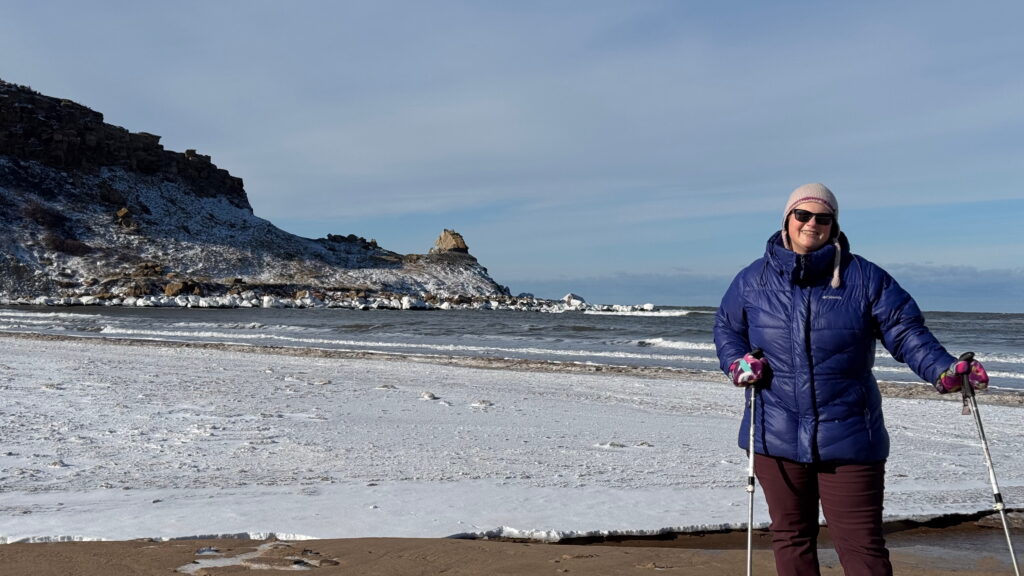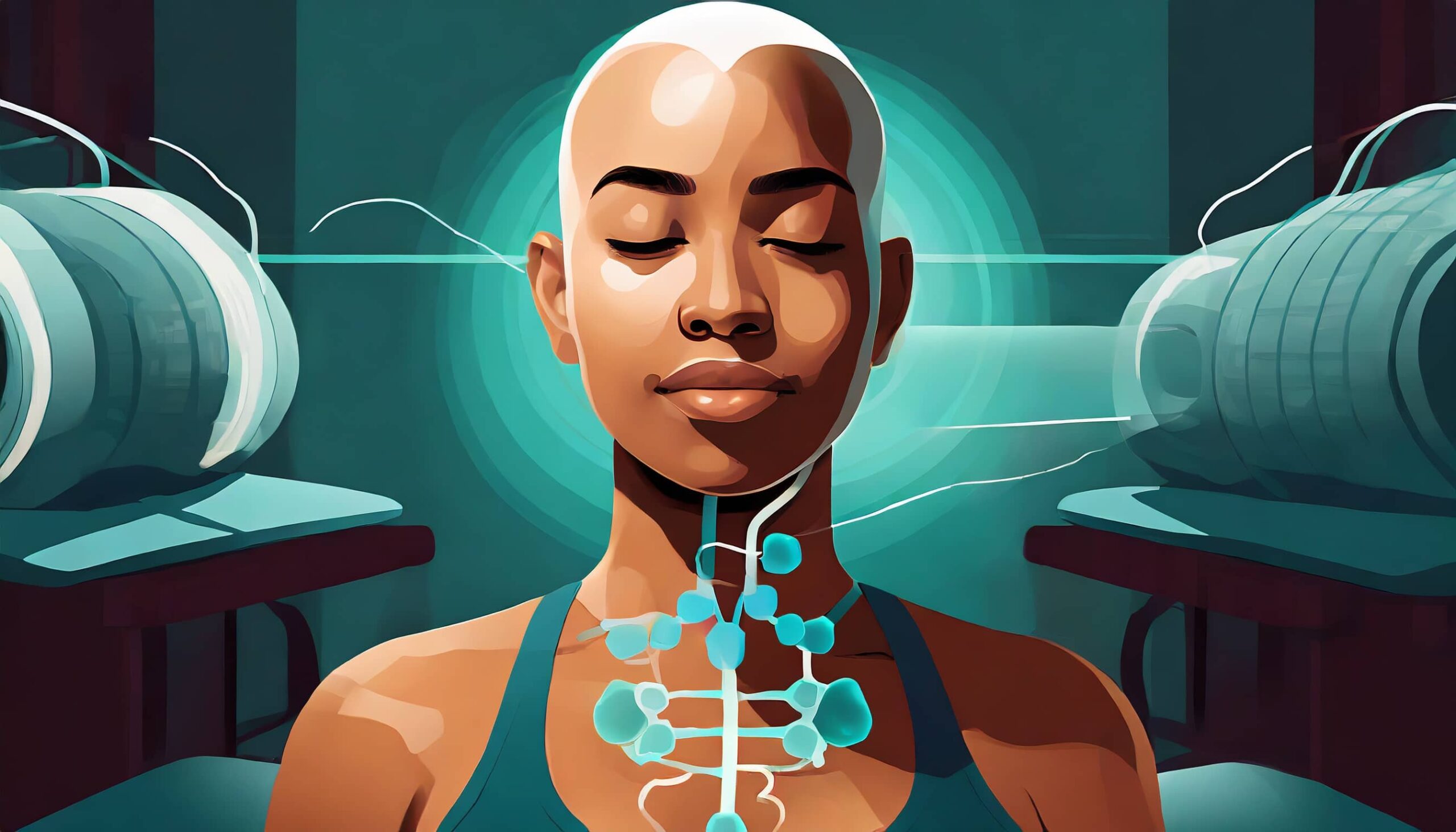Went up to Halifax today to have a consult with the radiation oncologist. I was expecting to be told that they recommended wide spectrum prophylactic radiation for four to six weeks – which would be a more typical treatment regime for someone on original diagnosis who had a lumpectomy and positive lymph nodes. That isn’t me.
Both the oncologist and resident were clear I was special – that it would be experience that guided treatment recommendations. There is no direct clinical evidence-based recommendation for my specific case.
We first saw the resident – who was there on her first day – One thing she mentioned was the difference between “local” recurrence – which would be if it recurred in the skin of the breast or chest wall, as that is still breast, and a regional recurrence which is what it is in my case – where the cancer recurred (and mutated) in the lymph nodes.
At one point the oncologist said we were dealing with a different cancer – in that it has a totally different pathology from my previous cancers – with lower estrogen receptor and the new HER2 positive receptor. So, in many ways, we are dealing with this like a new cancer, hence the full chemo regime.
She did throw a number out there, that no one else had mentioned – and that is that I have a 50% chance of recurrence – in part again because it is rare for the cancer to come back almost 10 years later. It isn’t that uncommon for it to mutate if it comes back, so the change in pathology isn’t a huge surprise.
The radiation oncologist recommends radiation to specific lymph nodes that are further in from the ones that were removed. These are nodes that if they did get cancer, it would be very difficult to remove them surgically. One of them is very close to the brachial nerve which affects motion in your arm. Those who end up with tumors there are often in a lot of pain. There isn’t much she can do after a tumor grows there – but we can do radiation now to reduce the likelihood of spread to under 5%. So, although there aren’t specific numbers for me, there were a couple of numbers mentioned.
The radiation would be for three weeks (15-sessions) and would only be to the series of lymph nodes (between the axilla where they were removed and the lymph node under under my collar bone near my neck). They won’t be doing radiation to my chest wall, sternum, or left side as there is nothing to warrant it. This makes me feel better, as I feel like what is suggested is very specific targeted radiation that has a very specific purpose, and not a general overall prophylactic radiation to “catch errant cancer cells”.
The radiation oncologist (rad onc) mentioned that typically with HER2 disease they do a CT scan of the head as well as the core of the body. When I was diagnosed, they checked my bones and ensured that I didn’t have cancer there, but they didn’t validate that my brain is clear. With HER2, it is quite common to metastasize to the brain. She is going to order a head CT that can be done in Bridgewater. That is going to generate a whole new set of scanizety for me.
The next steps for radiation is what is called a simulation or marking appointment. It is an appointment where you go to the radiation treatment centre and they use a CT find exactly what they want to irradiate, and then they measure and mark you – with small tattoos. These are used during treatment to ensure everything is lined up. A couple or few weeks after the simulation, treatment will start.
They do have some things organized – for example, late Monday and early Friday appointment time slots are reserved for those who are staying at one of the lodges and are travelling home for the weekend – that we would be me. It was on my list of things to ask about, however, they had already answered it in one of the patient information leaflets that we picked up on the way in (to read while we were waiting). There are two lodges where they typically put people up during radiation treatment. All that is setup after the simulation appointment when they are making the specific radiation treatment schedule. I asked about Scott staying with me, and that did not seem to be an issue.
We also asked the rad onc about lymphedema. This of course is the biggest risk, and for me, has already happened, so she can guarantee that radiation therapy isn’t going to make it any better. We asked about doing treatments for it while doing radiation, and that was not recommended. When I asked more about how it is treated here (as in Nova Scotia as opposed to California), she said that typically a physiotherapist does manual lymphatic massage, and once things stabilize you look at getting appropriate compression garments. It made me realize that I probably bought my garments too soon – they aren’t working well for me, and part of that is that the lymphedema hasn’t stabilized yet – it is quite variable and chemo and radiation won’t help the variability. It doesn’t hurt or really bother me much now, so I’m pretty much going to keep doing what I’ve been doing and make more concrete plans after radiation is complete. I have a lymphatic massage apt with my physiotherapist next week.
Radiation cannot start until at least 4-weeks after my last chemo treatment. The nurse figured that I’d likely have my simulation appointment in two to three weeks. Radiation would likely start early to mid February. Since my birthday falls on a Friday this year, I don’t expect radiation to start until after my birthday.
Overall, it feels like a good day. I went in expecting a recommendation of 6-weeks and broad treatment, and came out with a recommendation of 3-weeks and very specific treatment – which is something that I find my easier to get on board with.


Leave a Reply